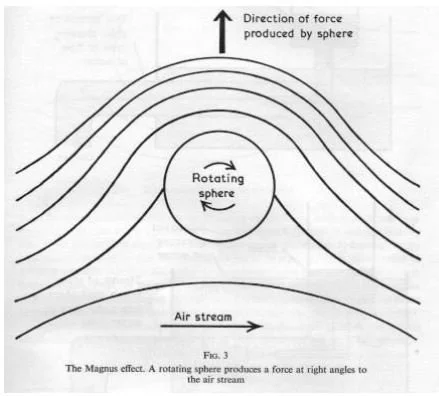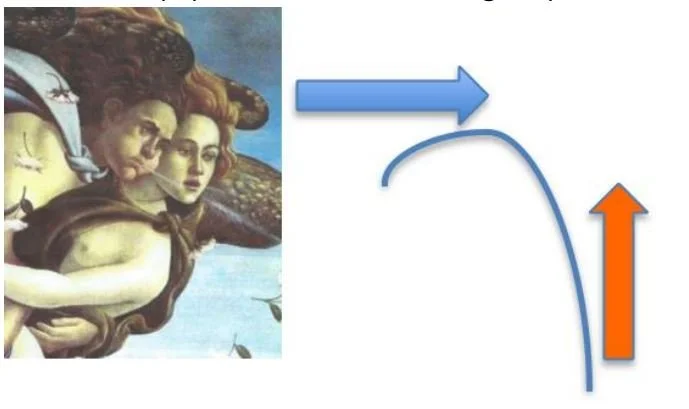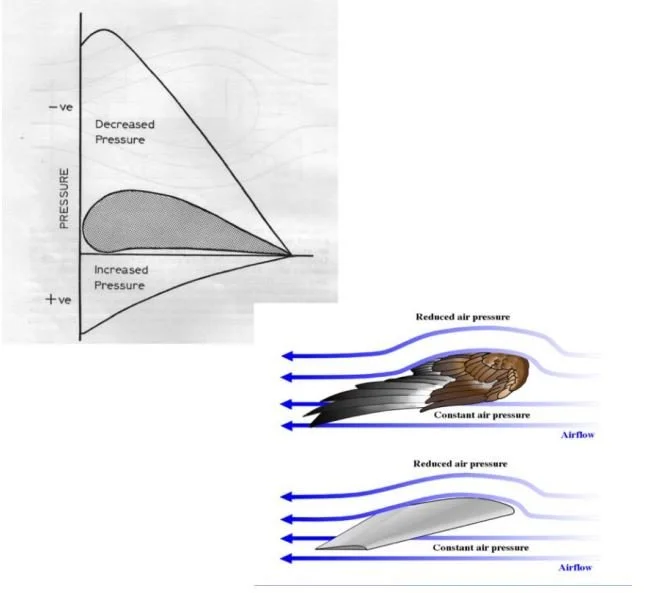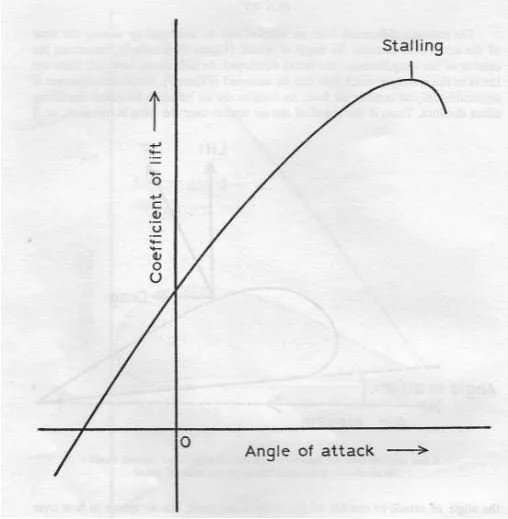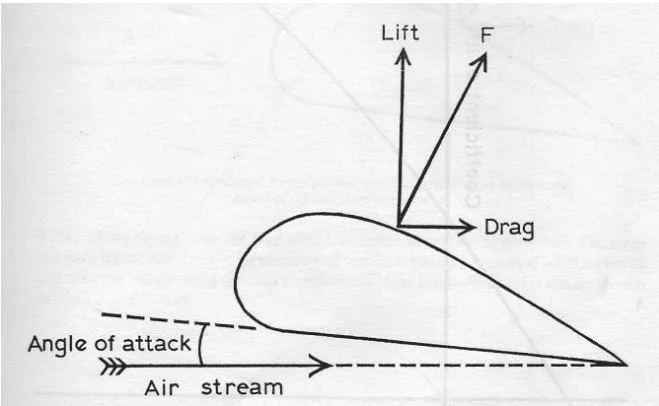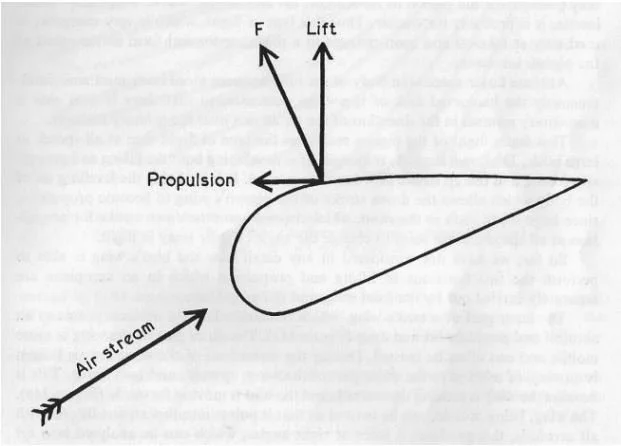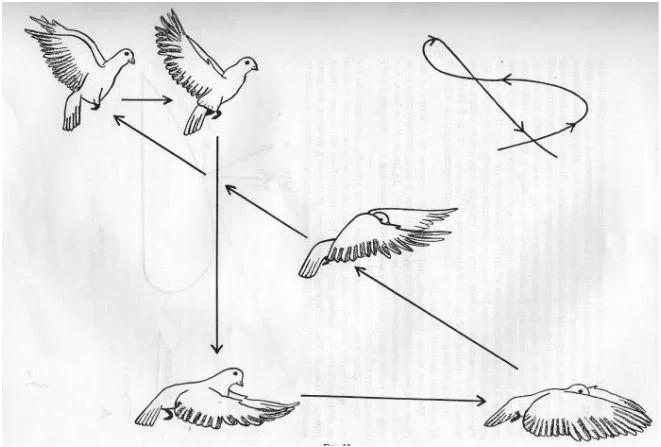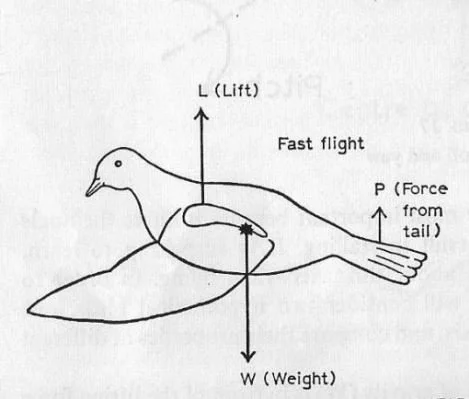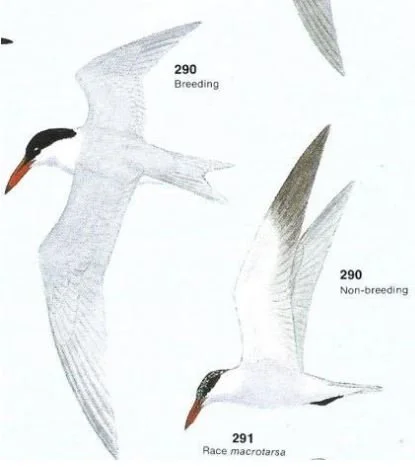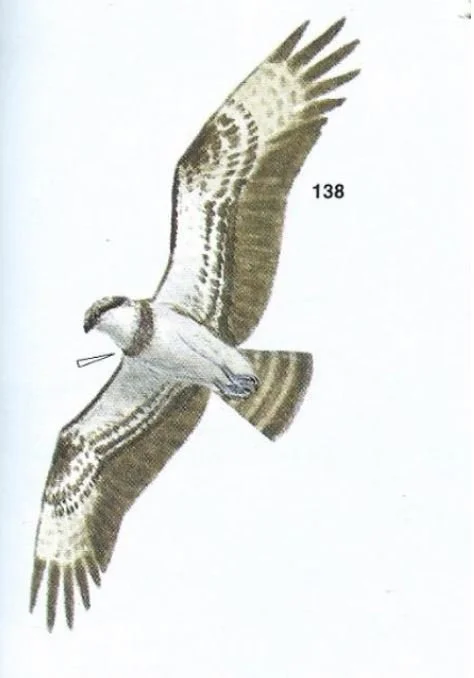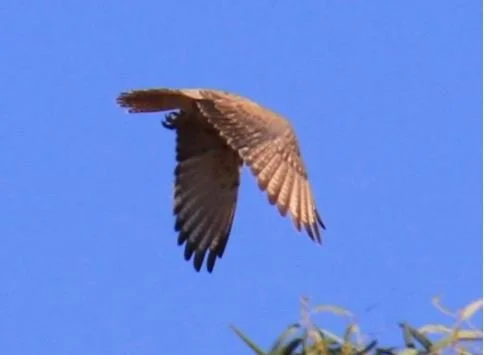Extension
How do Birds Fly?
Background
We see them do it every day – but how do they do it without propellers and jet engines?
One of the clues come from watching cricket – have you ever wondered how a bowler manages to get the ball to change direction in mid-air and move behind the batsman, to hit his wicket?
MAGNUS EFFECT
The bowler may not be aware of the physics behind it, but he is using the ‘Magnus Effect’.
• This says that when a ball or a sphere is rotating in an airstream it will move in a 90o direction (right angles) across the airstream.
The reason for this was worked out almost 300 years ago by a Dutchman called Daniel Bernoulli in 1738 – and hence called BERNOULLI’S THEOREM
It states:
• as the speed of a liquid or fluid increases, the pressure within it drops,
and is expressed as:
P + ½ dV2= K
• where P = pressure within the stream, d = density of the fluid, V = its velocity and K = a constant.
Since the right-hand side of the equation must always equal a constant value, as V increases P must decline.
A very simple way to demonstrate Bernoulli’s Theorem is to take a piece of paper and hold it in your hands, just in front of your lips. It will fall into a fold, and if you then blow over the paper fold, you will see that the sheet rises in the air.
What you are doing is creating a wind current above the paper, and thus decreasing the pressure within that air flow.
Below the paper the pressure will be higher – and thus the paper rises, being driven by the high pressure below it.
HOW A BIRD’S WING IS DESIGNED
Let’s now look at how birds’ wings are designed.
• We first need to learn about the shape of an aerofoil. This is a streamlined body, but one which is not symmetrical. It is curved on top and flat or concave on the underside and is designed to exploit Bernouilli’s Theorem.
• Because of the wedge shape of the leading edge of the aerofoil, the air is forced up when the air stream meets it and is accelerated.
• The pressure within the air stream then falls and a negative pressure is created on the upper surface, relative to the lower surface of the aerofoil. We can see this pressure gradient in the following Figure.
• Because the pressure is lower above the aerofoil rather than below, it will rise upwards. We thus say that lift has been generated by the accelerated air flowing over it.
• We now compare a bird’s wing with an aerofoil and see that it is shaped as an aerofoil and generates lift in the same way when air moves over its upper surface.
Lift
How much lift can a wing or an aerofoil generate? It depends on its shape.
• The thicker the wedge at the front, the more the lift. This is because the air must move more, and accelerate more, to pass over the wing. There are limits, however, as to how much lift can be generated.
• If we raise the leading edge of the wing, we increase what is called the angle of attack of the wing in the airstream. This is the same as having a bigger wedge to the wing. It increases the lift, as we see in the next graph.
• As the angle of attack is increased, the lift increases. But only up to a point where it suddenly drops, and this is the point where the aerofoil or wing stalls.
• All aerofoils stall at two speeds, one at very low speed, and the other at very high speed. This is because the airflow over the aerofoil becomes turbulent and no longer as a smooth layered pathway (laminar).
It is important to remember that Bernoulli’s Theorem only applies when there is laminar flow over the aerofoil.
The other point we need to remember is that we never get anything entirely for free in this world!
• As well as lift, there is drag created on the aerofoil. This is like friction, and it operates against the lifting forces generated by the accelerated airflow. As we can see, the Force F generated is made up of two components – lift, which we want, and drag which we want to minimise.
• You can also see from the graph how the angle of attack works to increase lift from the aerofoil. We now have the basic elements of flying.
1. we want lift to be greater than gravity and
2. we want to convert drag into propulsion. Then we can fly!
HOW TO CONVERT DRAG INTO PROPULSION
This is one of the great tricks that birds have worked out, resolving the two forces lift and drag.
• The bird angles its wing as it moves down in the airstream.
• The same force F is being generated but now it is resolved in such a way that the drag is oriented forwards instead of backwards and thus becomes a propulsive force.
• This allows the bird to fly forwards in the airstream.
Changing the angle of the wing has solved the two basic problems,
1. making lift greater than gravitational force
2. overcoming drag
HOW DOES A BIRD ‘TAKE OFF’
Once we have worked out how birds use their wings as aerofoils, the next problem is how to get off the ground and generate the needed airflow over their wings.
• Aeroplanes do this by moving faster and faster along the runway until the airspeed over their wings is sufficient to overcome gravity.
• Some very large birds, such as swans and geese, also use this method to get into the air and others, such as eagles and vultures, launch themselves from high cliffs.
• Most small birds, however, rise directly from the ground with a few rapid wing beats. How do they do it?
The Figure demonstrates how a pigeon flys directly upwards from the ground (i.e. pure lift with no propulsion) by moving its wings in a ‘figure of eight’ motion.
• The wing is held very flat when it is brought downwards, and then is twisted as it is pulled rapidly back up. (The wings often clap together over the head: the sound you hear when pigeons take off).
• In this way the wing only generates lift on the downstroke, which lifts the bird off the ground.
AERODYNAMIC STABILITY AND THE CENTRE OF GRAVITY
An amazing thing about birds is that they are not aerodynamically stable objects.
DART, ARROW OR AEROPLANE
A dart, an arrow, or an aeroplane follow a given trajectory when launched, and will return to this same trajectory automatically if something tries to divert their flight path.
• Such aerodynamic stability is dependent on the position of the centre of gravity (COG), relative to the lift-generating surface.
• Aerodynamically stable objects have the COG in front of the aerofoil.
• In the case of a dart, the front is always heavy, and the tail feathers are the lift-generating surface. If something forces the dart upwards, this will increase lift from the aerofoils (because of the increased angle of attack)
• the extra lift will create a moment force that acts around the COG, causing it to rotate. (As an example, when a door is pushed open, a moment force is being applied onto it, causing it to rotate about an axis, its hinges).
• As this force is in front of the aerofoil, it will bring the front of the dart downwards and back onto its original trajectory.
• If the COG were behind the aerofoil, the moment would work in the opposite way and cause the dart to veer off course.
BIRDS
Birds are not aerodynamically stable objects. Without their brain, they cannot fly!
• The bird’s centre of gravity (in the Figure) is behind the lift-generating aerofoil, nearer its tail. If the angle of attack increases, the lift would create a moment around the COG and spin the bird over on its back – if the bird failed to correct the angle.
• With an aeroplane, the COG is in front of the wing and, if for any reason the nose of the ‘plane goes up, the increased lift generated on the wings will automatically operate around the COG and bring the nose back down.
• This happens without the pilot intervening and occurs because the aeroplane is an aerodynamically stable object – unlike the bird.
USING A PAPER PLANE
A good way to learn about the COG, and how important it is in flying objects, is to experiment with paper planes.
Make a few and make sure the nose is heavier than the tail. Then make tail heavier by gluing on a small weight – like a 5c coin – and observe the result
WING SHAPES
Once a bird is airborne, its activities require many changes in flight movements. A bird will fly rapidly if chasing a prey for example, or slowly if it is hovering, or carrying something heavy back to the nest. How does it manage this? By the shape of its wing.
The bird on the left (a swift) has very thin wings that are raked backwards. This tells us that the swift is a very fast flyer.
The other (a buzzard) has very large broad wings and has the feathers separated at the extremities. This allows the buzzard to fly at low speeds and carry large payloads.
• High speed wings generate a lot of lift when the airflow over them is high, and the area of the wing is reduced dramatically to cut down on drag. This means that the lift produced at low speeds is very poor and their wing will stall if the bird tries to fly slowly.
• The buzzard’s wing on the other hand does not allow the bird to fly at high speeds, but it can keep it in the air at very low speeds because of its large surface area and huge lift.
What happens at the end of a wing where the feathers are apart? Here, the low pressure above the wing meets the high pressure below it.
• The pressure difference must be equalised, and this happens by air flowing around the tip of the wing, creating a wing-tip vortex.
• This happens at the tips of both wings and results in a loss of power for the aerofoil. There are various ways in which birds have managed to reduce the size of the wing-tip vortex.
ASPECT RATIO OF A WING
This is simply a number, calculated from the length of the wing divided by its width (L/W). The ratio varies from about 4 in low-speed wings to 10 in soaring birds such as gulls and albatross. Gliders, used for soaring by pilots for example, have extremely long thin wings with aspect ratios over 30. Because the wings are so thin, however, the glider needs to be towed by a propeller ‘plane to get them into the air.
• For the swift, the shape of the wing has a big influence on the wing-tip vortex. It has a very high aspect ratio (long and thin) and the wing-tip vortex is small.
• For the buzzard, the wing is short and wide with a low aspect ratio and has a large wing-tip vortex.
• When you see a large bird, like a crow, with its feathers opened at the wing tip, you know that it is flying slowly and has reduced the size of the wing-tip vortex, which would otherwise bring the bird close to stalling.
What can you tell about a bird from its wing?
As we have seen, birds’ wings vary quite a lot in size and shape. This tells us a lot about their ecology (why they are found in their environment – generally relates to the nature of their food). Some examples of wing types are shown in the picture below.
Elliptical Wings are found in birds adapted to forested, wooded and shrubby habitats, where birds require good manoeuvrability. They have a high camber(i.e. thick at the front) and a low aspect ratio (AR) of from 4 to 5.
The famous fighter plane in World War II, the Spitfire, had an elliptical wing. Examples of a local bird with elliptical wings is the Red wattlebird (Anthochaera carunculata), and the Rainbow lorikeet (Glossopsitta porphyrocephala, also known as the Zit parrot.
High Speed Wings are much thinner and more delicate than elliptical wings and are typically swept backwards to reduce drag. Local birds, such as Caspian tern, Swifts and Swallows are commonly seen birds with high-speed wings.
The Peregrine falcon (Falco peregrinus) with a very highspeed wing, is the fastest bird, and, indeed, the fastest animal on the planet. A top speed of 389 km/hour has been recorded from one in a dive.
Soaring Wings have a high aspect ratio (AR) of 7 to 8 and are found on seabirds such as gulls, petrels and albatross that spend much of their time soaring above the waves and exploiting thermal uplifts to avoid flapping flight.
Slotted High Lift Wings are characteristic of many terrestrial soaring birds, such as eagles and vultures. These wings have a moderate aspect ratio with marked slotting and have a high camber (thick leading edge). This wing design not only allows them to carry heavy loads, but also enables them to minimise energy expenditure whilst foraging for food. The Osprey (Pandion haliaetus) is a good example of a bird that preys on fish and may fly very rapidly when attacking its fish prey, and then slowly carrying its catch back to the nest.
The buzzard (Figure below) is a land bird that preys on rodents and lizards.
Teacher Note. There are over 800 different species of birds found in Australia. How many can you find in your schoolyard? Use the Spice Bird Guideto identify as many birds as you can. Are they there at all times of the year or are they perhaps migrants, like the Pallid cuckoo that is only heard in winter? Try keeping a record of what birds you see, and at what times of the year. Can you work out when they are breeding? (Hint – magpies only swoop when they are guarding their nests!). Keeping a record of birds and their movements over time provides important information needed by other scientists to study the impact of climate change.
Activity
Bird Field Activities:
1. Observe wing types in birds in flight and identify the type using the information above.
2. From the wing type, explore how this adapts the bird to its lifestyle.
(i) hat wing type would you expect a honeyeater to have, and why?
(ii) what type of wing would you expect a hawk to have? Why?
3. Make a list of all the birds that occur near your school and classify them by wing type.
(i) Which is the most popular wing type amongst birds living in your area?
(ii) Can you explain why this is the case?
(iii) Suggest what wing types may not be found in the Wheatbelt?
